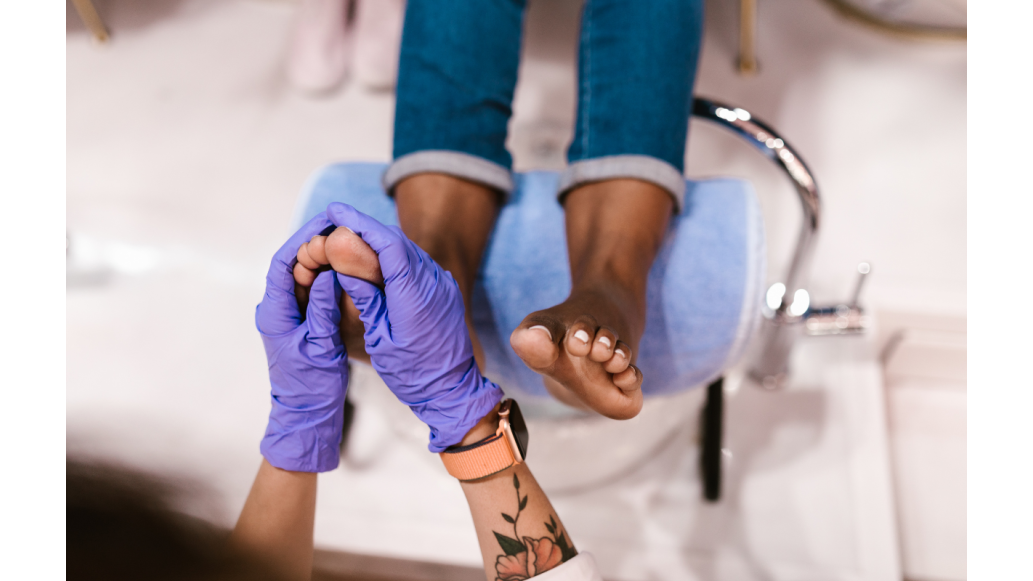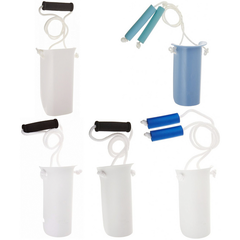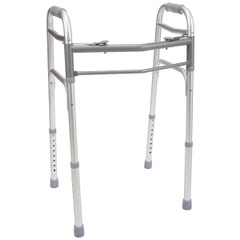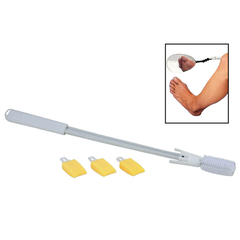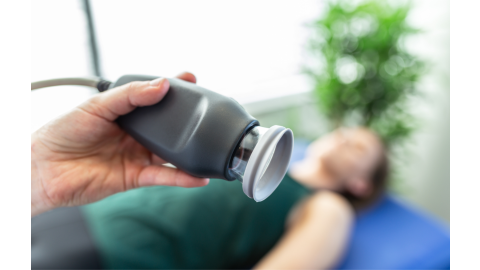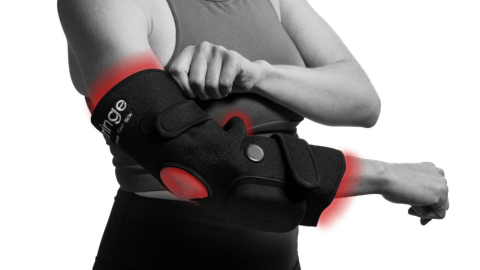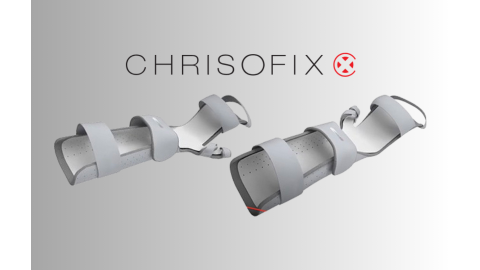Maintaining mobility and ensuring proper foot care are important for at-risk populations, particularly individuals with diabetes, limited flexibility, or mobility restrictions due to injury or surgery. Clinicians help guide patients toward effective strategies that preserve mobility and prevent complications. This article outlines evidence-based recommendations for adaptive aids and techniques, emphasizing mobility and health.
Challenges in Foot Care for At-Risk Populations
Diabetes-Related Complications
Peripheral neuropathy, a common complication of diabetes, leads to reduced sensation in the feet. This makes individuals less aware of injuries or pressure sores, increasing the risk of ulcers, infections, and amputations if not addressed. Clinical Consideration: Screening for sensory loss and balance dysfunction is important, as neuropathy can affect both injury detection and stability.
Limited Mobility
Patients recovering from surgeries, injuries, or conditions like arthritis may find it difficult to perform routine foot care due to movement restrictions. This can make inspecting, cleaning, and caring for their feet more challenging, increasing the risk of complications. When limited mobility is combined with neuropathy, the likelihood of foot problems increases.
Post-Injury or Post-Surgery Considerations
Swelling, stiffness, and movement restrictions after an injury or surgery can interfere with foot care, increasing the risk of poor hygiene, infections, and pressure sores. Clinicians often focus on rehabilitation and mobility, but education on foot care techniques can help reduce secondary complications.
Evidence-Based Recommendations for Foot Care
Regular Foot Inspections
Patients should inspect their feet daily for cuts, blisters, redness, or swelling.
Adaptive Aid: A long-handled mirror can help patients check the soles of their feet.
Proper Hygiene Practices
Feet should be washed daily with lukewarm water and mild soap, ensuring they are dried thoroughly, especially between the toes, to prevent fungal infections.
Lack of mobility can make this difficult, so caregiver training and tools that assist with reach are helpful.
Moisturizing
Applying moisturizer can help prevent dry, cracked skin, which may increase the risk of infection.
Adaptive Aid: A long-handled lotion applicator can help individuals with limited reach.
Safe Nail Care
Toenails should be trimmed straight across and not too short to reduce the risk of ingrown toenails.
Adaptive Aid: Long-handled toenail clippers can help those with mobility challenges.
Use of Appropriate Footwear
Wearing well-fitting, supportive shoes reduces pressure points and lowers the risk of foot ulcers.
For diabetic patients, specialized footwear may help prevent ulcers and pressure-related complications.
Adaptive Aids to Support Foot Care
These tools may help at-risk populations perform foot care tasks with greater independence:
- Long-handled mirrors assist in foot inspections without excessive bending.
- Long-handled lotion applicators help apply moisturizers.
- Long-handled toenail clippers aid in safe nail trimming.
- Sock aids and long-handled shoehorns assist with putting on socks and shoes to reduce strain and improve safety.
Maintaining Mobility in At-Risk Populations
Maintaining mobility is important for health and quality of life. Clinicians can encourage mobility through physical therapy, assistive devices, and patient education.
Physical Therapy
Exercise programs can improve strength, flexibility, and balance, helping to reduce the risk of foot ulcers and improve mobility.
Research supports structured exercise interventions as a way to help prevent diabetic foot complications and improve functional movement.
Assistive Devices
Recommending mobility aids such as canes or walkers can provide support and help prevent falls.
Patient Education
Education on foot care, movement, and appropriate footwear choices can help patients remain active and prevent complications.
Role of Clinicians in Encouraging Mobility
- Comprehensive assessments help identify mobility limitations and develop individualized care plans.
- A multidisciplinary approach, including collaboration between physical therapists, occupational therapists, podiatrists, and surgeons, can address multiple aspects of patient care.
- Goal setting with patients and providing ongoing support can help maintain mobility.
Featured Product: Sammons Preston Foot Care Kit
For patients who have difficulty managing foot care due to mobility limitations, the Sammons Preston Foot Care Kit provides a set of adaptive tools:
- Long-handled toenail clippers
- Pumice stone with an extended handle
- Lotion applicator
- Sock aid
These tools can help patients maintain independence in foot care and reduce the risk of complications.
Foot care and mobility support are important for individuals with diabetes or mobility limitations. By implementing evidence-based strategies and utilizing adaptive aids, clinicians can help patients manage their foot health and reduce the risk of complications.
Shop Individual Products of the Foot Care Kit
Other Recommended Products
References
- Bus SA, Waaijman R, Arts ML, et al. Effectiveness of foot-related interventions to prevent diabetic foot ulcer recurrence: A systematic review. Diabetes Metab Res Rev. 2020;36(S1):e3210. (doi:10.1002/dmrr.3210)
- Monteiro-Soares M, Russell D, Boyko EJ, et al. Diabetic foot ulcer prevention: A systematic review and meta-analysis of randomized controlled trials. Diabetes Res Clin Pract. 2020;161:108107. (doi:10.1016/j.diabres.2020.108107)
- Van Netten JJ, Price PE, Lavery LA, et al. Prevention of foot ulcers in the at-risk patient with diabetes: A systematic review. Diabetes Metab Res Rev. 2020;36(S1):e3270. (doi:10.1002/dmrr.3270)
- Cavanagh PR, Lipsky BA, Bradbury AW, Botek G. Treatment for diabetic foot ulcers: Evidence-based recommendations. J Foot Ankle Res. 2019;12:12. (doi:10.1186/s13047-019-0322-3)
- Hingorani A, LaMuraglia GM, Henke P, et al. The management of diabetic foot ulcers through physical therapy interventions. J Vasc Surg. 2018;67(3):768-780. (doi:10.1016/j.jvs.2017.10.044)
Medical Disclaimer: The information provided on this site, including text, graphics, images, and other material are for informational purposes only and are not intended to substitute for professional medical advice, diagnosis, or treatment. Always seek the advice of your physician or other healthcare professional with any questions or concerns you may have regarding your condition.








 France
France Australia
Australia